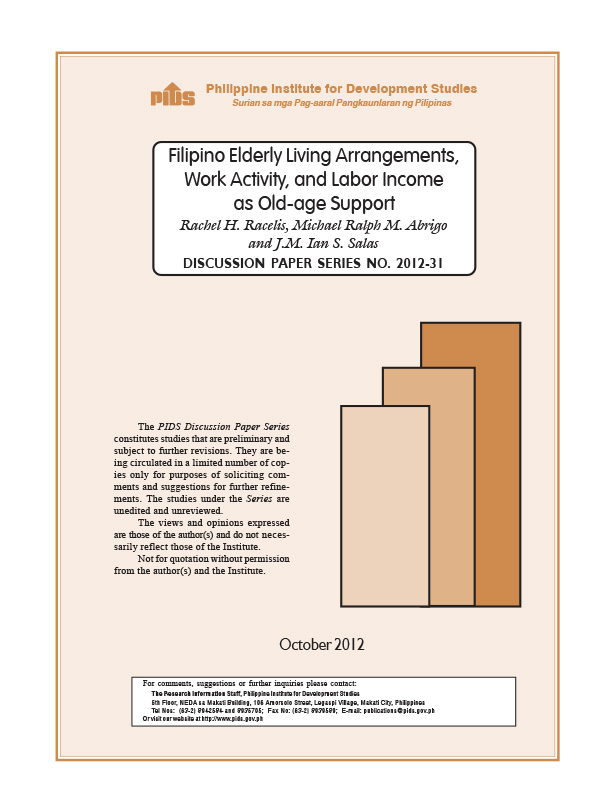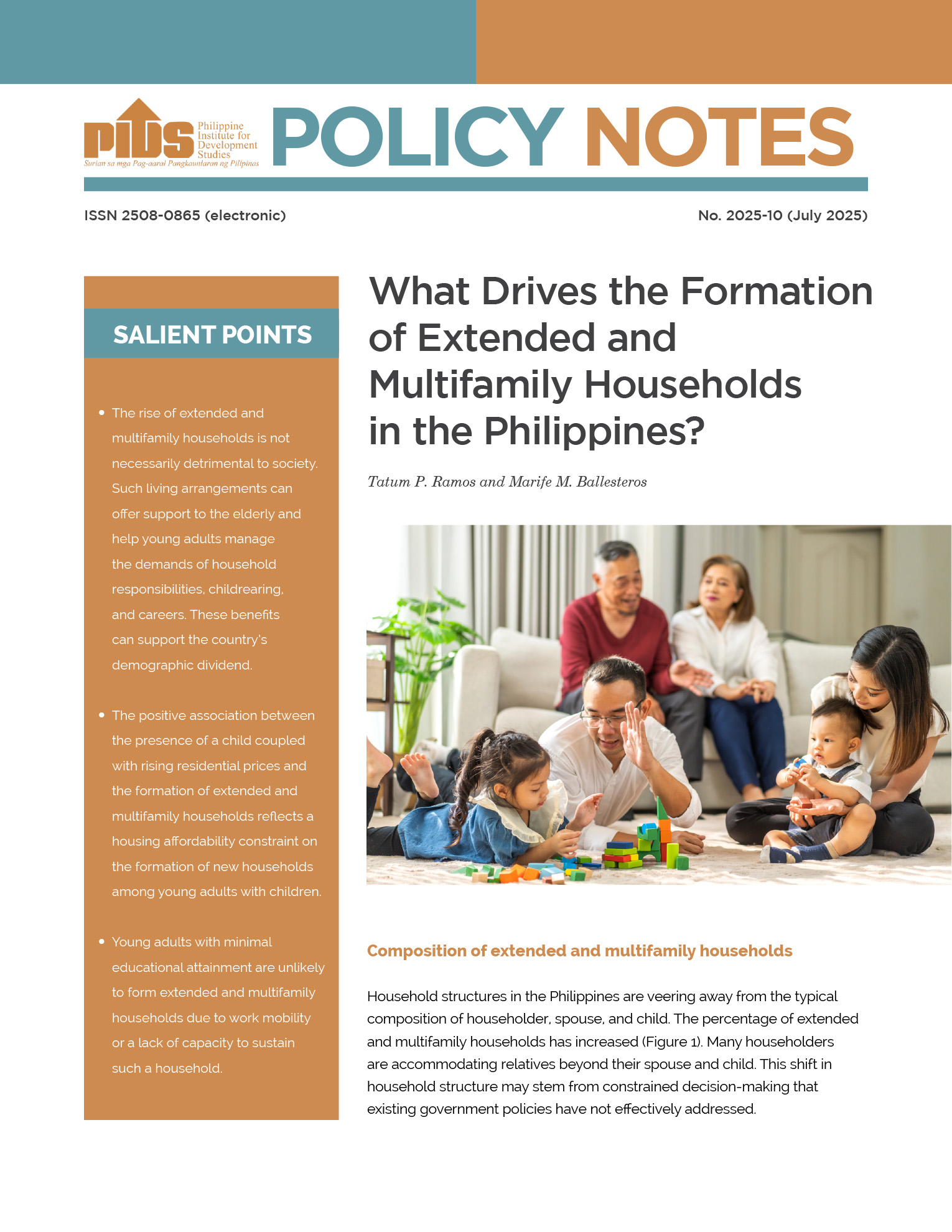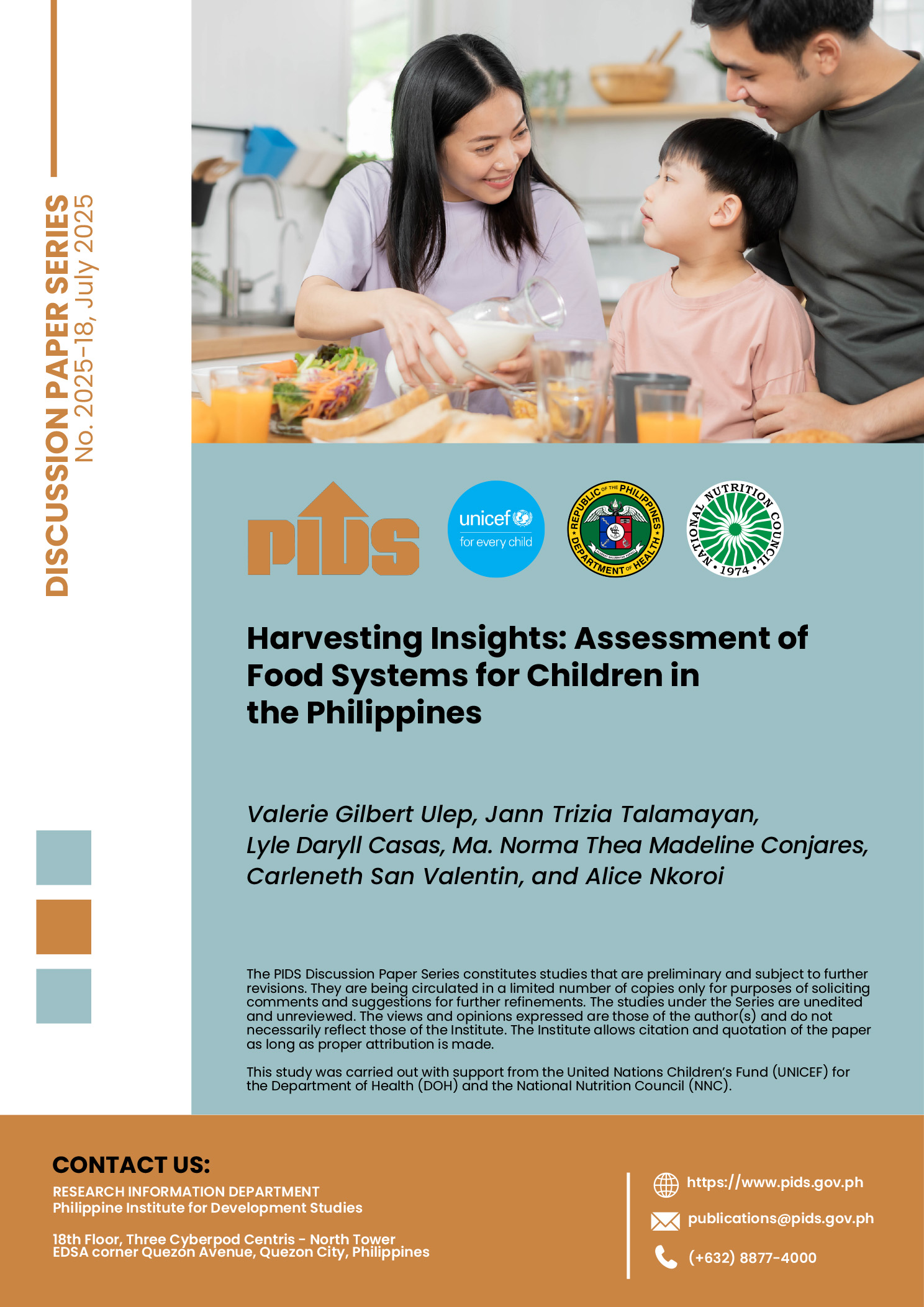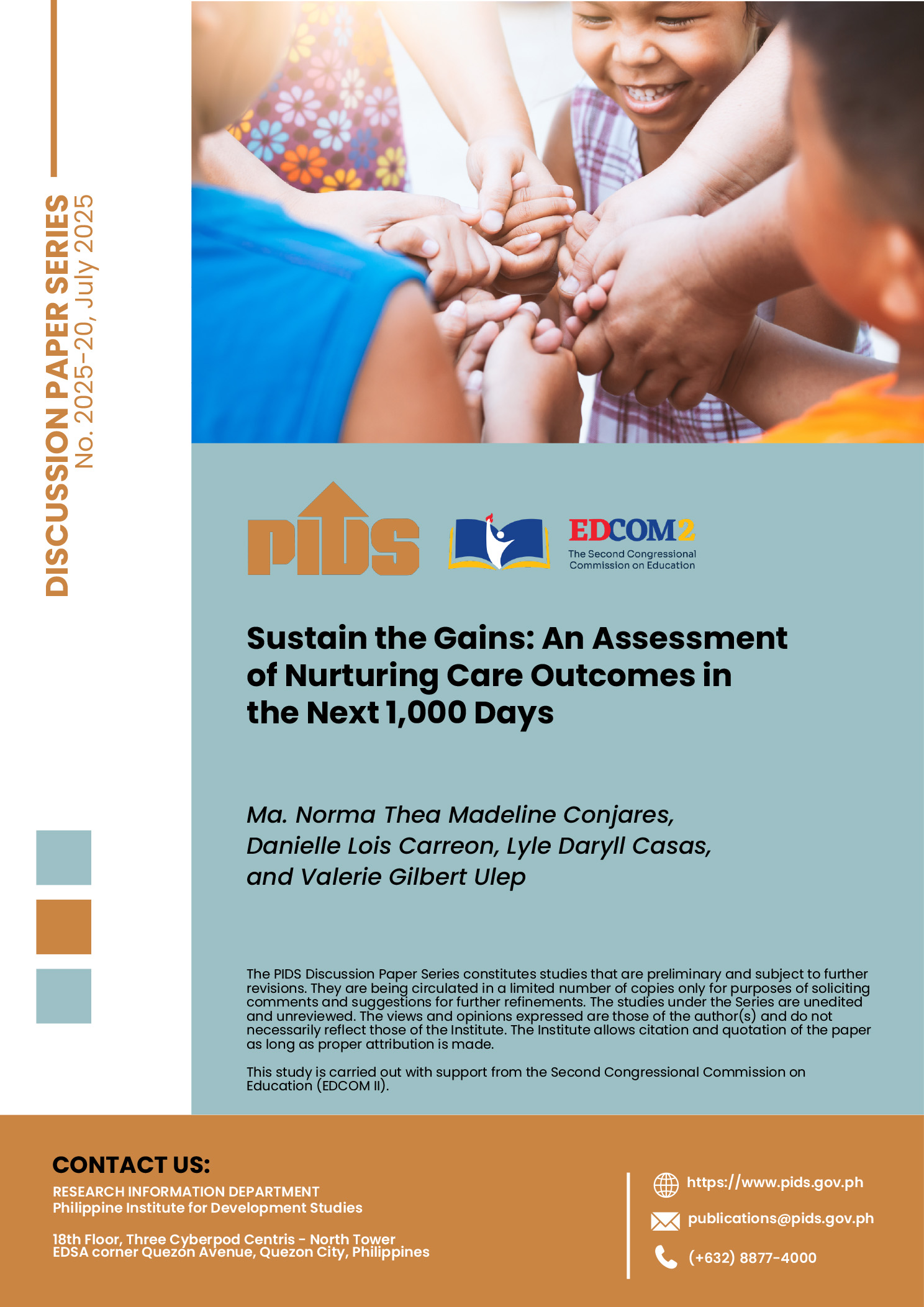This paper explores how elderly labor income can be expanded as a financing source for elderly consumption in the future through increase in elderly work activity. It examines elderly living arrangements and other factors that may influence elderly participation in work activities. The prospects of increasing elderly work activity in the future is assessed based on past and possible future trends in the following three factors, among many others: elderly health status, household headship by the elderly, and employment opportunities for the elderly, particularly household entrepreneurial activities.
Alternative scenarios of increases in elderly labor force size (based on assumed changes in the factors) were used in simulations and results show that the higher the increase in labor force size (1) the higher the increase in aggregate labor income, (2) the higher the proportion of consumption that can be covered by own labor income, (3) the higher the elderly deficit age cut-off, and (4) the larger the decline in the aggregate lifecycle deficit of the elderly. What can government do to encourage more elderly to continue working? Government action can focus on two areas: elderly health and well-being, and elderly employment opportunities and enabling environment. The government can finance and fully implement provisions in existing laws and public programs that address the two areas such as those articulated in the Senior Citizen`s Acts (1992 Republic Act 7432 and 2003 RA 9257) and the Philippine Plans of Action for Senior Citizens (1999-2004 and 2006-2010).













